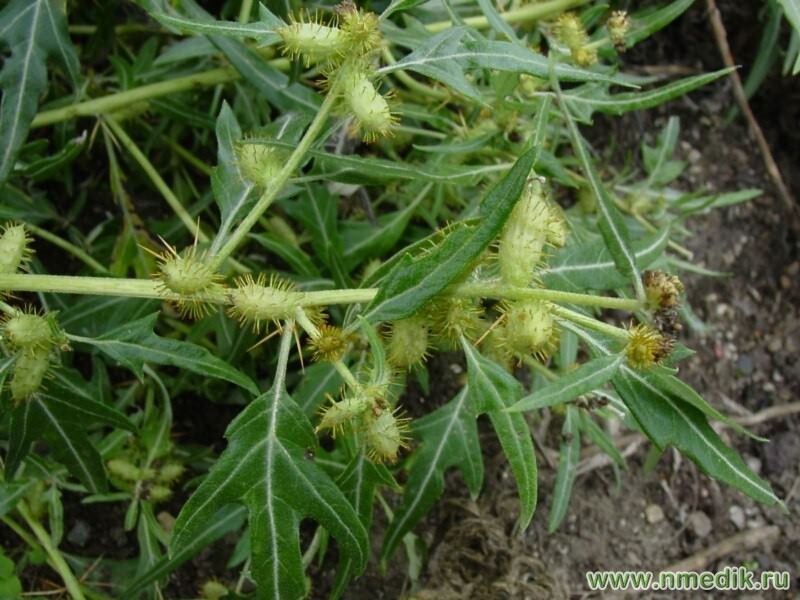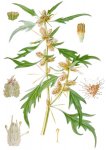Cocklebur cocktail - xanthium spinosum l.
Family Compositae


Botanical characteristics. Family Compositae. Annual plant with a stem up to 70 cm high, branchy, greyish-green (as well as leaves), short-haired-haired. Leaves at the base heart-shaped, above - three-lobed, incised-dentate. The plant is monoecious, inflorescences are unisexual. Male - multiflorous, almost spherical, with a wrapper from one row of narrow leaves; Female - two-flowered with a short-leaf wrapper from egg-shaped fluffy leaves, covered with scattered spines and provided with straight thick spines.
Spread. It grows in weedy places in the southern and middle parts of Russia, the Caucasus, Central Asia, southern part of Western and Eastern Siberia, and grows almost all over Europe, North Africa, West Asia, China, Japan and North America. The cocklebur can be grown from seeds on garden plots.
Used parts of the plant.
The above-ground part - during flowering; Root - in autumn, seeds - during ripening.
The plant is poorly understood. It is known that all parts of the cocklebur are rich in iodine, in addition, pigments, alkaloids, ascorbic acid, fatty oils, resins and glycoside (xanthustromarine) are found.
Application.
Drugs from cocklebur do successfully use in folk medicine for the treatment of diseases of the thyroid gland.
The grass is also used for gastrointestinal diseases - with diarrhea, dysentery and even with cholera. Fresh juice of grass is given to patients with urticaria: children from 2 to 10 drops (depending on age), adults 15-20 drops per reception 5-6 times a day.
Durnishnik - a good remedy for various skin diseases; Is applied inside and outwardly with eczema, lichen, fungal lesions. Fresh mashed leaves of cocklebur do oil the affected areas of the skin (or use a decoction of herbs for this purpose).
Contraindications. With external application of plant juice, sometimes there is a burning sensation. Use with caution.
Preparation.
To ingest 1-2 tablespoons of herbs for 0.5 liters of boiling water (insist in a thermos) - a daily dose.
For external use, boil 3-4 tablespoons in 0.5 liters of boiling water.




Comments
When commenting on, remember that the content and tone of your message can hurt the feelings of real people, show respect and tolerance to your interlocutors even if you do not share their opinion, your behavior in the conditions of freedom of expression and anonymity provided by the Internet, changes Not only virtual, but also the real world. All comments are hidden from the index, spam is controlled.